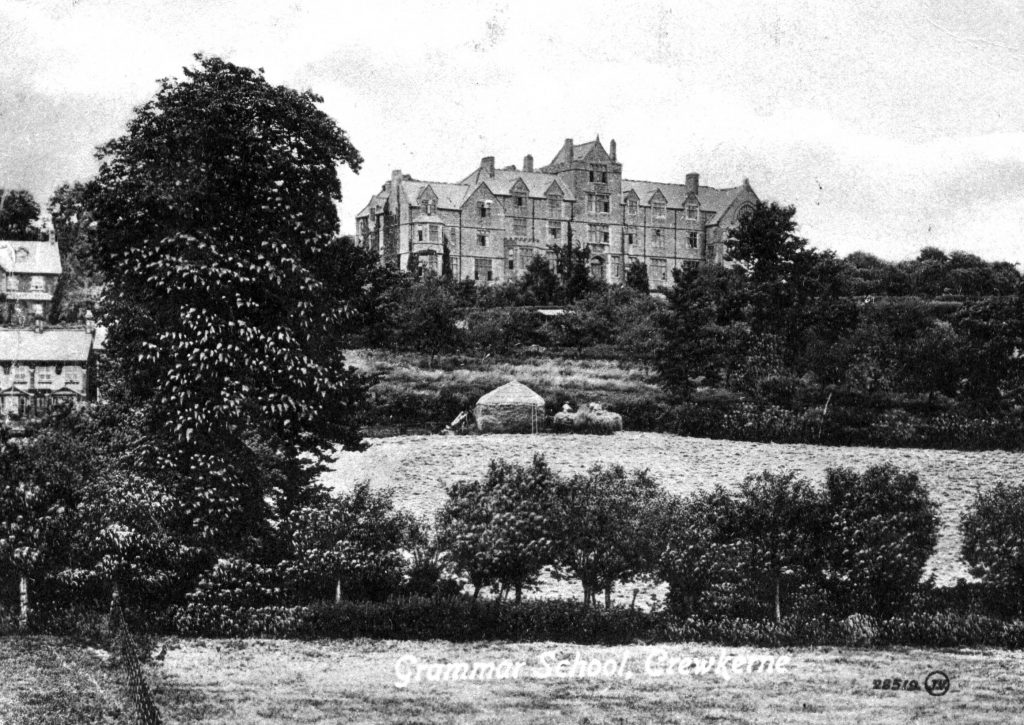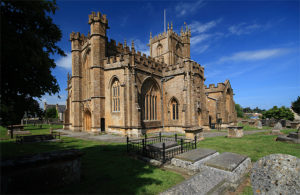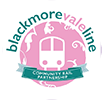Crewkerne is a most attractive old stone-built country town of around eight thousand inhabitants set in the beautifully hilly South Somerset countryside near the Dorset border and about half an hour’s drive from Dorset’s Jurassic coastline.
Its parish church of St. Bartholomew is one of the largest, finest and most famous in Somerset, a county noted for its churches. With its sheltered site in fertile countryside at the crossroads of major north-south and east-west routes, Crewkerne has been a favoured place of settlement for very many years.
The unusual name of the town reflects this setting, deriving from “cruc”, an old British word for a hill – probably referring to Bincombe Hill to the north-east of the town – and “aern”, a house or storehouse. The first historical mentions are in Saxon times some eleven hundred years ago, but by this time Crewkerne was already a place of some importance as a royal estate with a mint and a Minster which was the mother church of an extensive surrounding region.
Crewkerne’s market was also of great importance from early times, and is recorded in the Domesday Book of 1086 as the second most valuable in Somerset. In later mediaeval times Crewkerne was noted for its goldsmiths, and the wool industry based on the favourable climate and good sheep farming land became increasingly important, which led to the rebuilding of the parish church on a grand scale in the later fifteenth and early sixteenth centuries. Further evidence of mediaeval prosperity was the founding of the Grammar School, one of the earliest in England, in 1499.
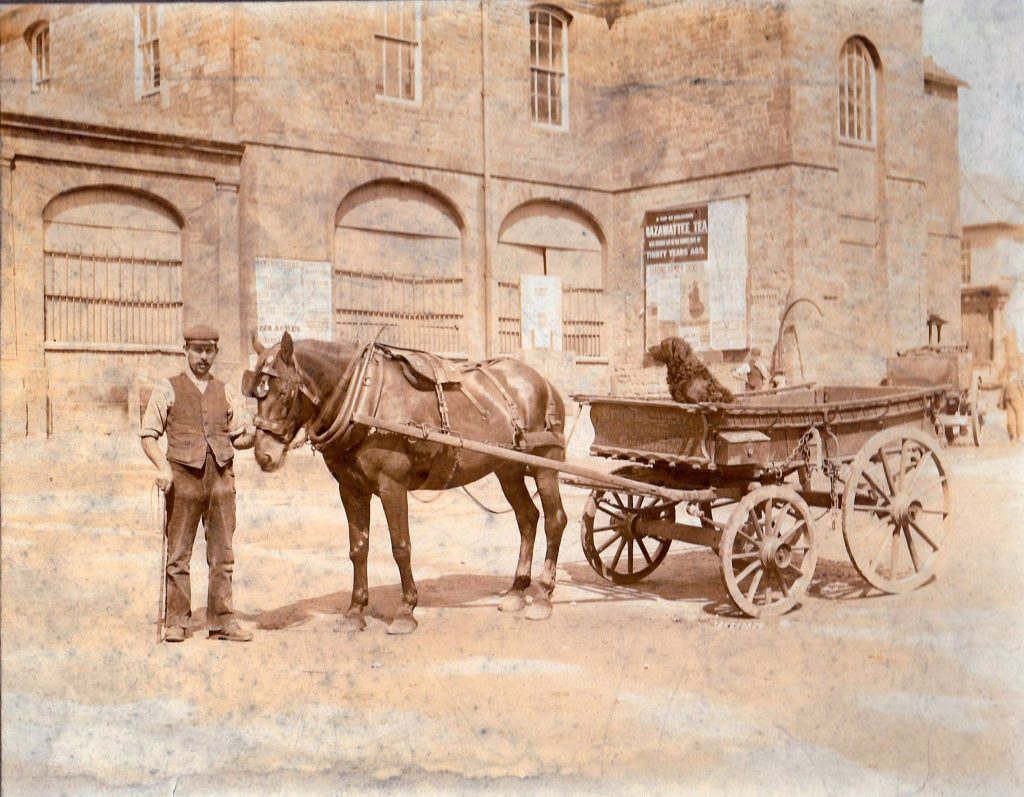
Crewkerne and the wider world
By the sixteenth century Crewkerne was becoming increasingly important as a centre for travellers on the London to Exeter road and also the north-south routes leading to the Dorset ports, evidenced by the large number of inns grouped around the Market Square. The agriculture in the region continued to develop in the sixteenth and seventeenth centuries, and a diversified textile industry based on locally produced wool and flax began to take shape, becoming the main basis of the town’s prosperity in the eighteenth and early nineteenth centuries. At first this was essentially a cottage industry, but factories began to appear from the late eighteenth century. The pioneering one was Samuel Sparks factory at Viney Bridge in South Street in 1789, later Arthur Hart and Son webbing factory which, 200 years on, manufactured parachute harness webbing for the Space Shuttle Columbia. This factory used water power from a tributary of the River Parrett, and was accompanied by the building of workers’ cottages along South Street which, with others associated with later factories, remain a characteristic part of the town scene.
More textile factories followed in various parts of the town, with specialisation in areas such as webbing and sailcloth. Sailcloth flourished particularly during and after the Napoleonic wars in the early nineteenth century. We are led to believe that Crewkerne supplied some of the sails for Nelson’s “Victory” – and manufacturing sailcoth, for a time, was the town’s most important industry. There were twenty-seven sailcloth firms in the Crewkerne area in 1828 and twenty-two percent of the workforce in Crewkerne were employed in this industry by 1851. This boom period saw the construction of many of the buildings that now characterise the town centre, including both the residences of those profiting from the manufacturing boom of the time and ‘service’ establishments such as shops, banks and inns. This was fortunately a time when the local variety of the prevailing ‘Georgian’ and ‘Regency’ architectural traditions produced buildings comfortable to live in and as attractive to modern eyes as they were to their builders.
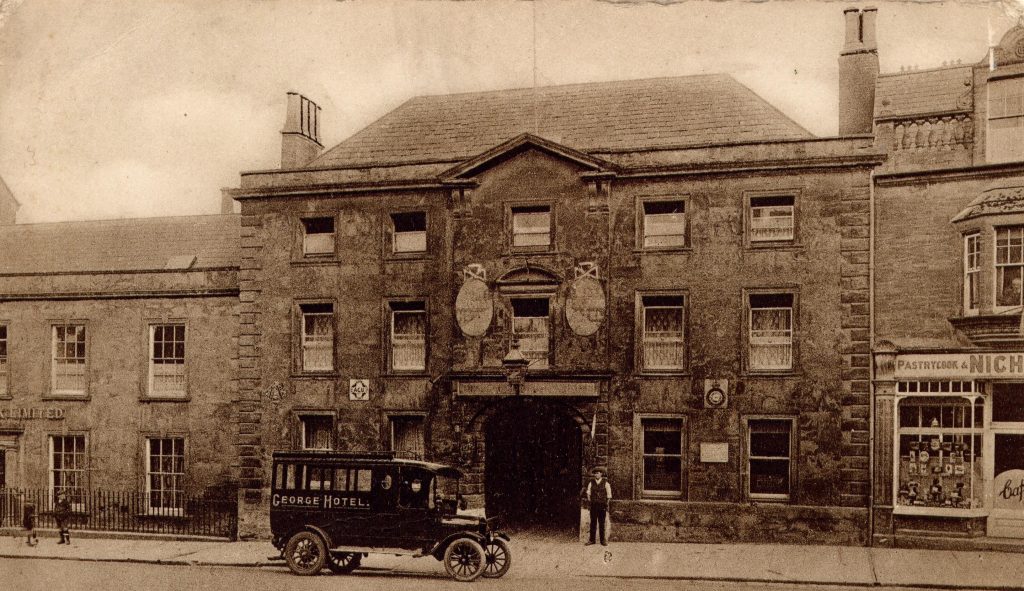
Crewkerne’s textile industry continued to diversify and expand into the second half of the nineteenth century, but decline set in in later Victorian times as labour-intensive manufacture moved to the north of England where the coal was and sail gave way to steam ships. The first half of the nineteenth century was probably the town’s greatest period of growth and prosperity, with a population increase from 2567 in 1801 to 5093 in 1891, but a falling back to 3733 in 1921. This relative decline was not reversed until after the Second World War, so there was relatively little new building in late Victorian and early twentieth century years – an important factor in preserving Crewkerne’s attractive historic street scenes. The one major development between the wars was the construction of one of the first council estates in the country at Severalls Park in association with a memorial to the fallen of the 1914-18 War when 178 Crewkerne men were killed, a devastating number for a town of its size which must have contributed to the continuing stagnation of Crewkerne’s business in the inter-war years. This new local housing authority, initiated by the Blake family, was a major contributor to the eradication of TB which was very prevalent at the time in the overcrowded cottages of the town centre. This estate was also significant as the first important expansion outside Crewkerne’s traditional street pattern, and foreshadowed the enormous spread of the town in the triangle formed by South Street, Hermitage Street and the railway after the Second World War.
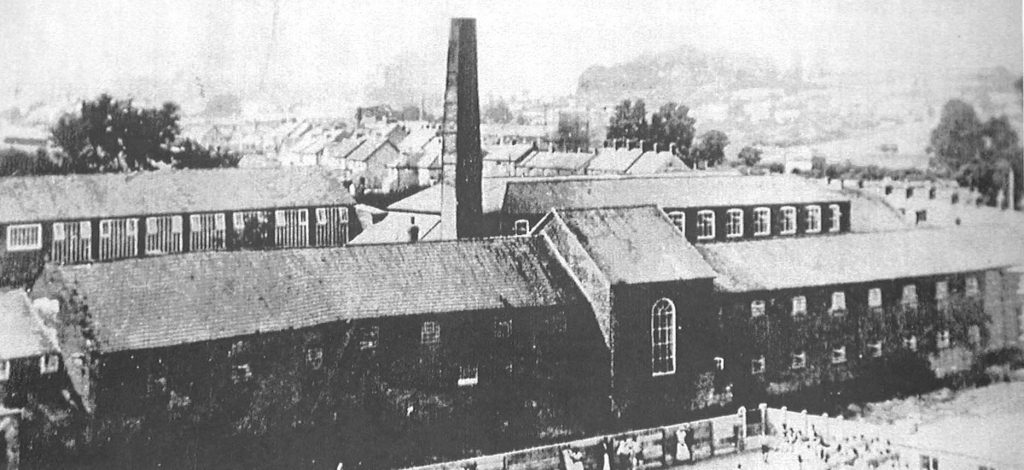
In the 1950s the Crewkerne Urban District Council determined to stop the town’s relative decline, and to this end created the Blacknell Lane Trading estate off South Street on low-lying land unsuitable for housing. This was an immediate success in attracting new and more diversified industries to the town, and some 1000 people now work there in a range of different enterprises. These, and some later groupings of industrial activity round the old mills off North Street, led to a considerable revival in fortunes and gave the town a broad industrial base which helped it weather the lean years of the early 1980s and the 1990’s recession without serious employment problems. This industrial expansion led to a substantial growth in Crewkerne’s population, which increased by over 1000 between 1951 and 1981 and reached an estimated 6542 by 1993. As a result many new houses were built, including expansion of the Severalls council estate and extensive private development in the Kithill area beyond it. Increasing population also led to development in the 1970s and 1980s of the shopping precincts, in use by 1988.
The recession of the early 1990s caused something of a slow-down of activity, though house building continued steadily on the estates to the north of the town. A surge of activity then followed in the later 1990’s dominated by some remarkable community projects, most notably the Aqua Centre (swimming pool) opening in 1998 and the revamping and re-opening of Crewkerne Hospital, rescued from closure and its future secured by dedicated local action fund raising. The new Heritage Centre and Museum in Market Square and Community Sports and Leisure Centre at Wadham School were added to these achievements in 2000 and 2004 respectively, and since then a Fitness Centre has been built onto the Aqua Centre.
Meanwhile, as the main industrial estate continues to flourish, there has been a renewed decline in Crewkerne’s traditional industries, the last traces of which have been moved out with the departure of Bonsoir in 2004. The remaining industrial areas in North Street are being largely replaced by housing – as has the former cinema building in West Street.
